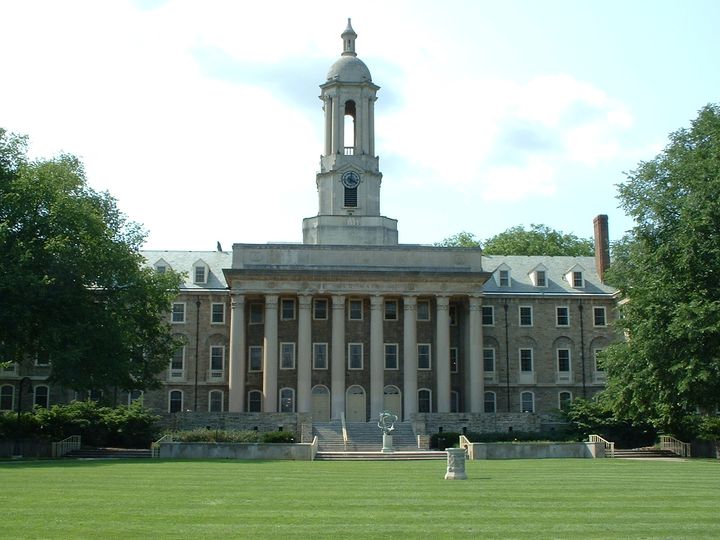
It’s hard not be depressed with the narrative surrounding college right now. Too many people taking on too much debt, too few graduating and too many degree-holders underemployed. If someone from 1950 magically transported to the future and opened a newspaper they'd be scared to death at the thought of sending their grandchild to college in 2016.
Yet by almost all accounts college is and remains a very prudent investment. Millions of people still pay reasonable rates at good institutions. Many get degrees that yield all kinds of public and private benefits. And while overall borrowing is on the rise, for the median student loan payments are no more of a burden on monthly budgets than they were 20 years ago.
This doesn’t mean the system can’t be made better. Still, we know college can be affordable because for millions of people it simply is. Folks get reasonably-inexpensive degrees and good paying jobs all the time without burdensome and lifelong debt payments.
That's important. The fact that some people get a good education at a good price and others don’t tells us that "affordable" is determined in no small measure by individuals' choices. After all, the primary determinants of whether someone can comfortably repay a student loan – which college to attend, which major to enroll in, how much debt to take on and how quickly, or if at all, a degree gets completed – are choices made by students.
It’s not that consumer choice and behavior isn’t already reflected in policy, it's just that the minimum academic and progress standards in place or consumer-friendly shopping tools that are starting to emerge look and feel like add-ons and not the centerpieces they should be.
Below I outline four ways the next president and his or her administration can make college more affordable by helping more students and families make the kinds of choices that currently help other students identify and obtain an affordable higher education.
1. Let colleges limit how much their students can borrow – It’s frankly odd that schools charge tuition and fees for services but must be held accountable for borrowers who take on debt in excess of those costs, especially when institutions in very close geographic proximity to each other can have widely varying cost of attendance estimates.
If we want schools to be on the hook for their borrowers’ defaults then they deserve the flexibility to determine how much borrowing their students can take on. The key features that many colleges sell certain programs on - night and weekend classes that cater to full-time working adults - is evidence alone that not all students necessarily need the amount of non-tuition support that an 18-year-old living in a residence hall at a college in rural Pennsylvania does.
If anything, schools that choose to do as much are signaling that on some level quality matters more than just revenue dollars, which should appeal to lawmakers concerned that schools are simply out to take advantage of unsuspecting students. Regardless, reducing borrowing reduces both monthly payments and total interest owed.
Institutions could inform students when providing them with their financial aid award letter that they are receiving a reduced award. Borrowers can be afforded the right to petition for additional funds – up to the maximum annual federal amount – but students who did so would be excluded from the school’s cohort default rate calculations.
2. Require students receive salary/career statistics – Borrowing decisions are essentially cost/benefit analyses but too much of the information the federal government makes available focuses just on costs. Sure the College Scorecard includes earnings data but it's the most incomplete part of the data set and it also poorly relates earnings to a particular institution. Just look at the $39,100 figure for students ten years out from Grand Valley State University. It's basically a meaningless number for a school with 21,000 undergraduates enrolled in more than 87 different majors.
Prospective students need specific wage and employment data on the careersthey want to pursue. How much does a first-year elementary school teacher typically make? How much does the median biologist earn 10 years into their career? What are the employment prospects for a communications graduate in the greater Boston area?
Letting students rely on romantic notions of how much they might earn in this degree program or that before taking on long-term loan debt is irresponsible and if anything probably encourages over-borrowing on the assumption a high-paying job is just around the corner. Combine incorrect expectations with the fact that around half of all students don't end up with a degree six years after enrolling and you have the perfect mix for a loan default disaster.
The Bureau of Labor Statistics already collects the kinds of data that can help prospective students and parents, it just needs to be packaged in a far more user-friendly way. Schools could require students review this information before declaring a major, or the federal government could require borrowers to review key information about their intended career before signing their master promissory note. It's helpful to students and would be an important due diligence step for schools and the federal government as a lender.
3. Revamp how students get non-tuition financial aid – Borrowers typically don’t understand how much over-award they are entitled to in order to properly budget for non-tuition expenses until the disbursement is about to take place. They also receive funds in a lump sum, which they are then responsible for managing over the remainder of the term. Together these encourage binge spending, lead to poor budgeting and can contribute to funding shortfalls that may require non-federal financing alternatives.
One solution would be for schools or the government to give students the option of having refunds distributed in monthly tranches rather than as lump sums, possibly through a debit card. Another would be to give borrowers, as part of their financial aid award letter, an estimate of how much financial aid they would have each month of the academic year for non-tuition - e.g. housing, food, books, transportation costs, etc. - expenses.
More information sooner makes it easier for students and families to keep borrowing in check (it's easier to not take money than give part of it back). More importantly, dribbling out loan proceeds would help students treat those dollars like employment income that must be budgeted, but also ensures money is available every month. For the federal government, a disbursement schedule like this helps minimize excess borrowing since they can stop the flow of funds to students who drop out immediately.
4. Create a student loan insurance market – Unlike other large, long-term loan obligations (e.g. automobiles, homes) there is no market that allows consumers to purchase protection on their education investments. An insurance marketplace would let students and families hedge against the possibility of being unable to pay off loans down the road while letting markets dictate how much risk should be associated with any given academic program or school.
For students and families it would offer peace of mind and also work as a hedge against rising tuition. For the government it would virtually eliminate defaults and for insurers, the gap between when premiums are collected and payouts would occur would make it an attractive business model. From a public policy perspective, insurance creates a safety net but is more efficient than taxpayer loan forgiveness. The same way that bad drivers pay higher premiums, students who enroll in riskier programs or schools would simply pay for the right to be in those kinds of programs.
Student borrowers could apply for insurance on an annual basis when federal loans are originated for an academic year. Borrowers would pay a premium entitling them down the road to either monthly payment coverage or potentially a full write off in the event that certain economic hardship conditions are met.
NOTE: This post originally appeared in LinkedIn Pulse on 06/15/2016
